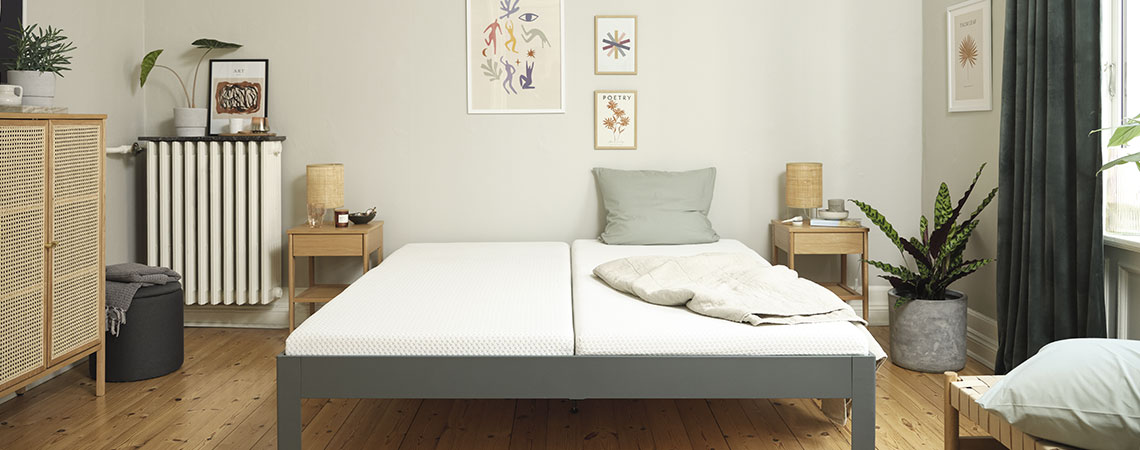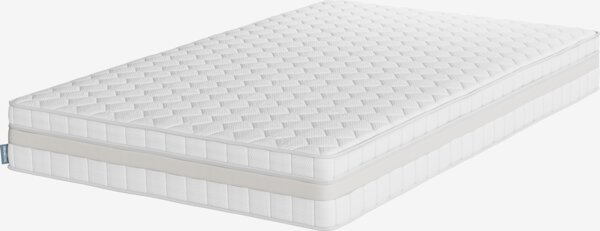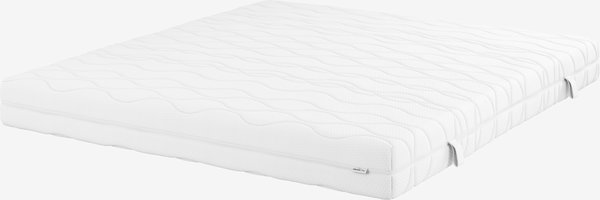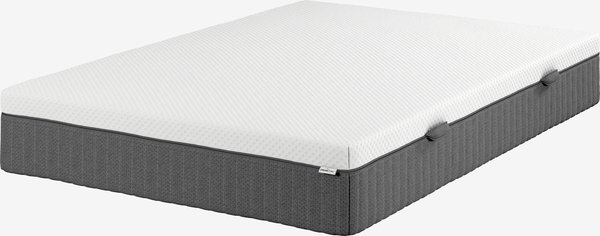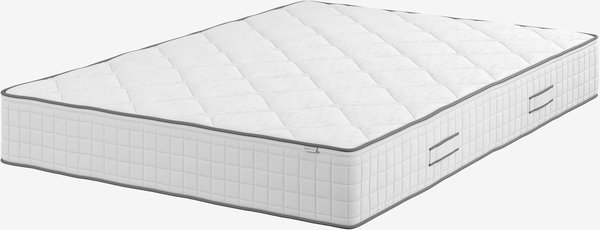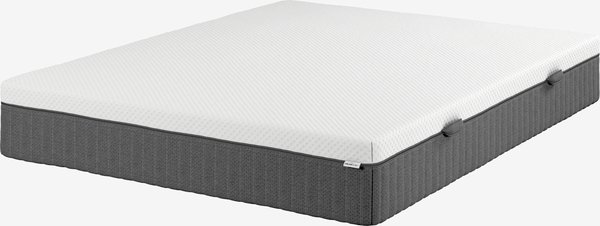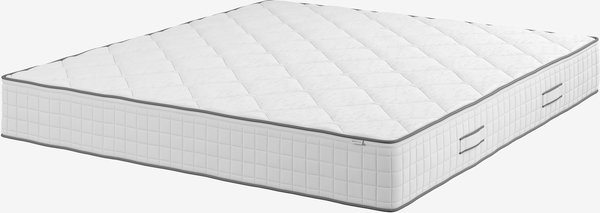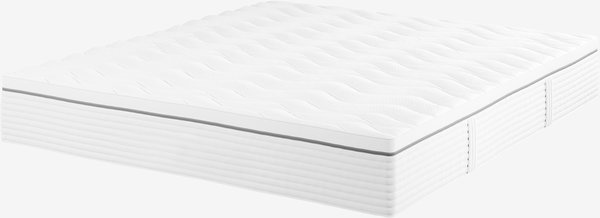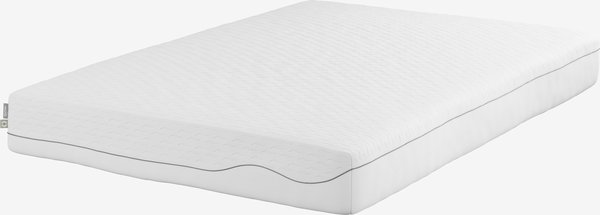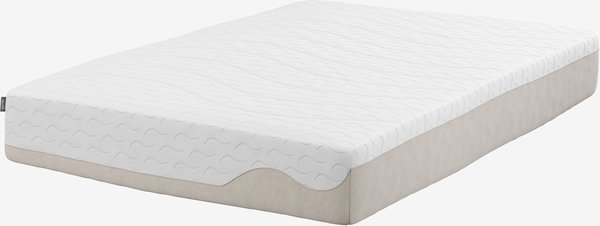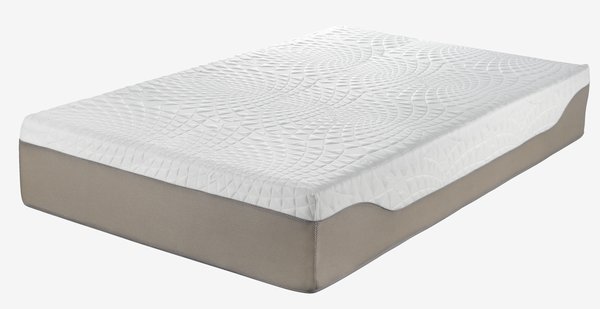Should you buy a spring mattress or a foam mattress?
Both a spring mattress and a foam mattress will give you the support your body needs for a good night’s sleep. But there are some key differences between a spring mattress and a foam mattress.
The core of a spring mattress consists of a spring system while the core of a foam mattress is a layer of one or several types of foam. This means that the choice between a spring mattress or a foam mattress can depend on your preferred sleeping position and other personal needs.
In the below overview, you'll get a quick idea of which mattress is the better choice for you.
Why you should choose a spring mattress
A spring mattress is characterised by its deep and supportive comfort. It is also a very flexible bed solution in that it can be placed in a regular bed frame, a continental bed or an adjustable bed.
A spring mattress consists of a spring system, filling and a cover. The spring system is what makes the mattress adjust itself to your body. It creates outstanding support and a feeling of deep comfort.
The spring system can consist of different types of springs that each have their own unique qualities. At JYSK, we primarily use these two types of springs:
- Bonell springs: Give a spring mattress a relatively firm and stable surface
- Pocket springs: Smaller than bonell springs, pocket springs form themselves precisely to your body, which results in a more nuanced comfort.
The choice between bonell springs and pocket springs is largely dependent upon your preferences and your sleeping position.
If you're a side sleeper, you will really appreciate the deep support created by the shoulder zones of a pocket spring system.
If you sleep on your back, you'll likely be more comfortable on a slightly firmer spring mattress.
At JYSK, we always recommend that you try out the different types of spring mattress before you buy one.
Advantages of a spring mattress:
- A spring mattress will fit many standard bed frames and can also be used in a continental bed or an adjustable bed
- The spring system adjusts to the contours of your body and provides good support.
- Thanks to its springs, the mattress is excellent at distributing the pressure on your body’s support zones. The more springs, the more nuanced support.
- If you sleep on your side , a spring mattress with shoulder zones provides good support for your shoulders and neck.
- The air circulation in a spring mattress creates a well-ventilated and healthy sleeping environment.
- Some spring mattresses can be flipped over and many models have different degrees of firmness on the top and bottom, so in principle, you get two mattresses in one.
Disadvantages of a spring mattress
- A spring mattress may feel more lively than a foam mattress, so you’re more likely to feel your sleep partner’s movements.
- The springs in the mattress can often make a bit of noise when you move around.
See our selection of spring mattresses
Why you should choose a foam mattress
A foam mattress has a core of foam rather than a spring system. A foam mattress can come in a variety of types and quality levels, making it a versatile option with many possibilities.
When it’s time to choose a foam mattress, you will typically have the following options:
- Polyether foam: A very popular type of foam that comes in different levels of both firmness and quality.
- High-resilience foam (also known as cold foam): This type of foam is heavier and more elastic than polyether foam. A cold foam mattress typically has a high load-bearing capacity that provides good support for your body. A cold foam mattress also typically has a long life span.
- Memory foam: A very flexible type of foam that adjusts itself to the shape of your body and provides very good support. A memory foam mattress is also good at holding heat, which is a real advantage if you tend to feel cold at night.
- Latex: This type of foam can be either all-natural or synthetic and is used in some of the more advanced foam mattress models. Latex is a particularly supportive material with an excellent durability, while also being both flexible and breathable. A foam mattress consisting of latex is therefore a natural choice if you tend to feel hot when you sleep.
Foam mattresses will have different qualities, depending on which type of foam is used. But as a general rule, all foam mattresses are relatively firm.
Advantages of a foam mattress:
- Foam mattresses have different qualities and prices depending on the type of foam. This means that you'll be able to find a foam mattress that matches your particular needs.
- With some types of foam, the mattress will really form itself to your body. This is particularly true of memory foam and gel foam.
- A foam mattress is less lively than a spring mattress, which means that you won’t be as disturbed by your partner’s movements during the night.
Disadvantages of a foam mattress:
- A foam mattress typically has a shorter lifespan than a spring mattress.
- The mattress’s foam will lose its elasticity over time.
See our selection of foam mattresses or read our blog post Which mattress should you choose? The ultimate guide.
If you are still not sure whether you should choose a spring or foam mattress, don’t hesitate to visit the closest JYSK store. Our skilled staff is happy to guide you.
